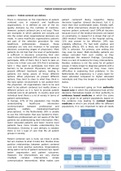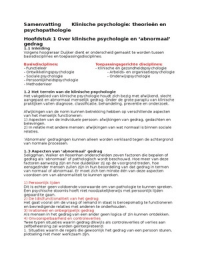Samenvatting
Patient centered care delivery complete samenvatting colleges + belangrijke aspecten uit de werkgroepen en literatuur - cijfer 7.4
Volledige samenvatting in het Engels van alle colleges van het vak Patient Centered Care Delivery. De colleges zijn aangevuld met de belangrijkste aspecten uit de werkgroepen en de literatuur. Zelf heb ik deze samenvatting geleerd en een 7.4 voor het tentamen gehaald.
[Meer zien]






